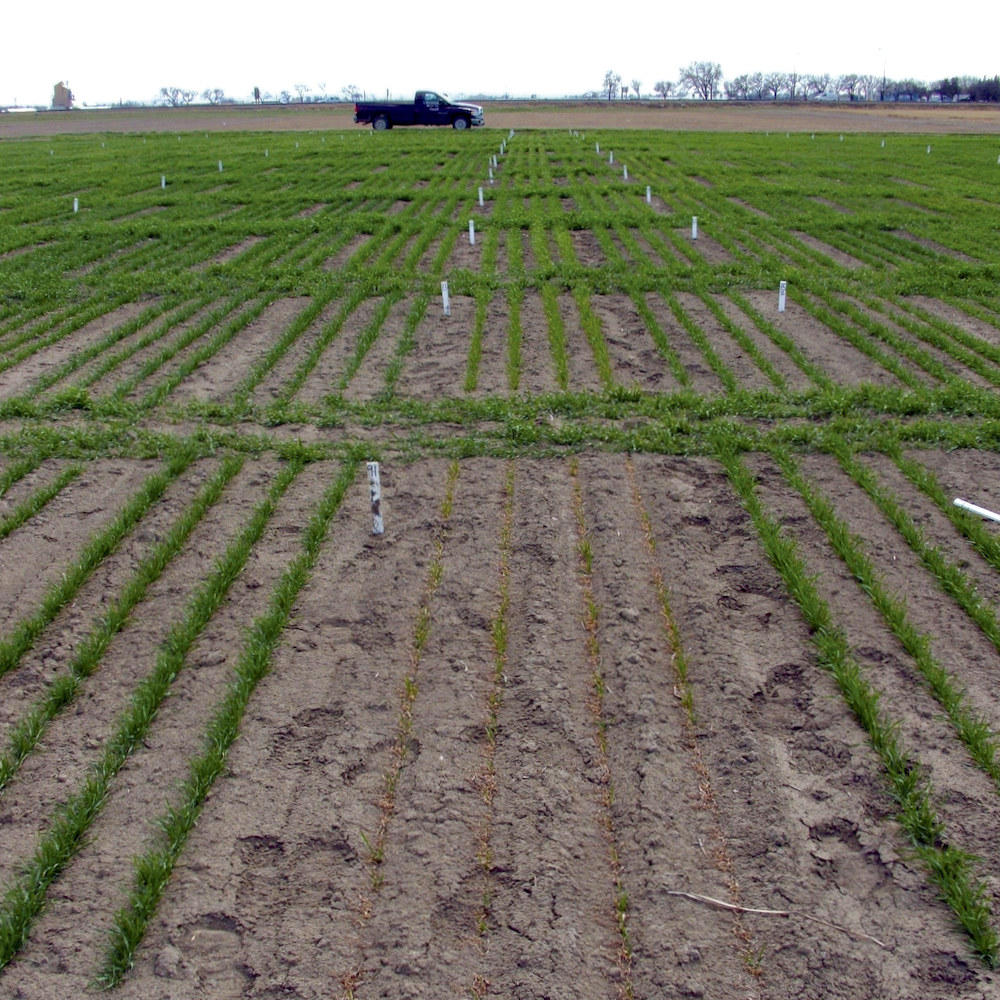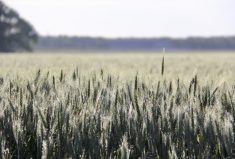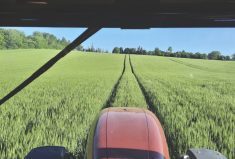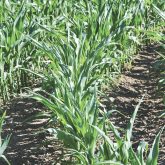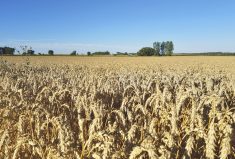Suppose that it’s the end of October and it’s starting to freeze, but the soil is still bone dry and can still be worked. Is it time to bring out the seeder? It’s risky, but has been tried, at least in the northern U.S.
It’s called “dormant seeding” — planting long before soil temperatures and/or moisture conditions will allow the seed to germinate. This technique is common for plants such as native grasses and forbs. It works best with crops like wheat that keep their growing points below the soil surface for an extended period after leaf emergence. Crops like canola that have growing points on or above the soil surface as they emerge can be damaged by spring frosts. A recent Canola Council newsletter noted that fall seeding of spring canola is not recommended in Western Canada.
Because Prairie farmers can generally seed spring wheat quite quickly after snow melts, dormant seeding isn’t common in Canada. And while it’s been studied for decades at Dakota Lakes Research Farm, a not-for-profit organization in South Dakota, it’s not widespread in that area either although farm manager Dwayne Beck says a few producers in South Dakota do dormant-seed all of their spring cereals, as it keeps them in the rotation in some soils, and spreads workload.
Read Also

Sensing the soil: Root cell research finds ‘stress hormone’
Research into how root cells react to soil stressors could help plants better adapt to changes in their climate.
“But it takes substantial discipline to hook on to a seeder when it is cold and dark in late November. It’s more of a wet weather technique for soils that are difficult to seed in the spring. It’s used on heavy soils and in instances when spring seeding could interfere with seeding other crops like peas or flax … It’s also a technique for low-disturbance no till. It does not work with high disturbance.”
Beck adds that good sanitation and rotation need to be in place for dormant seeding success because time and temperature conditions will limit spring burn-down options. Surface residue should be sufficient to minimize soil temperature fluctuations during short winter warm-ups that might trigger germination followed by extreme cold.
Beck says most western Canadian producers do not have sufficient rotational diversity to have the same sanitation that’s present in South Dakota cropping systems.
“We haven’t had to use a grass weed control product in wheat for over 30 years. Due to good rotations and low disturbance, weeds like wild oats are also not an issue. Similarly, residue-borne diseases are not an issue. The residue levels are not large because dormant seeding will generally be into soybean, pea or flax residue. This is dark residue that will warm in the spring. It’s sufficiently heavy to prevent temperature fluctuations. We’ve never had … the winter false-start issue.”
Trial data at Dakota Lakes Research Farm indicates dormant seeding of winter wheat does not compare well to dormant seeding of spring wheat. One study over three years found that dormant-seeded spring wheat yield averaged 65.8 bushels per acre versus 62 bushels with late-March seeding. Beck notes that this slight yield advantage with dormant seeding would be higher if the spring seeding was delayed into April.
In South Dakota, a normal seeding rate (1.6 million pure live seeds/acre) or slightly higher is appropriate for dormant seeding. Treating the seed with a fungicide seed treatment has been found to be beneficial, as was placing dry fertilizer (50 to 70 lbs. of 11-52-0/ac.).
Regarding insuring a dormant-seeded crop, the Saskatchewan Crop Insurance Corporation (SCIC) reports that it insures fall-seeded spring crops for insurable losses not related to the method of seeding, including establishment benefit and full yield-loss coverage on acres that do successfully establish in the spring. However, if that crop suffers losses due to fall or early spring germination that spring-seeded crops in the area are not experiencing, SCIC may reduce or deny the claim as a management-related loss.
‘Flex wheat’
Rob Graf, a breeder at Agriculture and Agri-food Canada’s Lethbridge Research and Development Centre, is working on another option for seeding in the fall — or maybe spring. He calls it “flex wheat” — lines of spring wheat based on winter wheat genetics. These are cold-tolerant spring wheats that can be planted in the spring, but act like winter wheat when planted in the fall.
Graf created several prototype lines from winter wheat lines that are very winter-hardy and also very photoperiod sensitive (needing long days in order to reproduce). He’s already successfully grown these lines in Brandon, Indian Head, Saskatoon and Lethbridge.
“I think if it’s commercialized in 10 to 15 years, flex wheat could provide a huge amount of flexibility for farmers and in doing so, reduce risk,” Graf says. “At this point, there are still lots of questions — for example, quality and yield differences when they are planted in the spring versus the fall. We’ve applied for funding to answer these and other questions and continue the breeding work, so we’re anxiously waiting to hear what happens.”
When asked about the feasibility of dormant seeding flex wheat varieties, Graf notes that dormant seeding of any variety can be a risky proposition. “Getting the timing just right so that the seed doesn’t germinate in the fall can be tricky.”
With winter or spring wheat, you need a period of cold acclimation for the plant to express its cold hardiness potential, Graf explains. “With winter wheat, seeding should be done by mid-September to allow the plants to cold-acclimate throughout the fall and develop large, healthy crowns so that potential is expressed. A flex wheat would have the potential to express cold tolerance below that of other spring wheats but will still need a cold acclimation period.”

